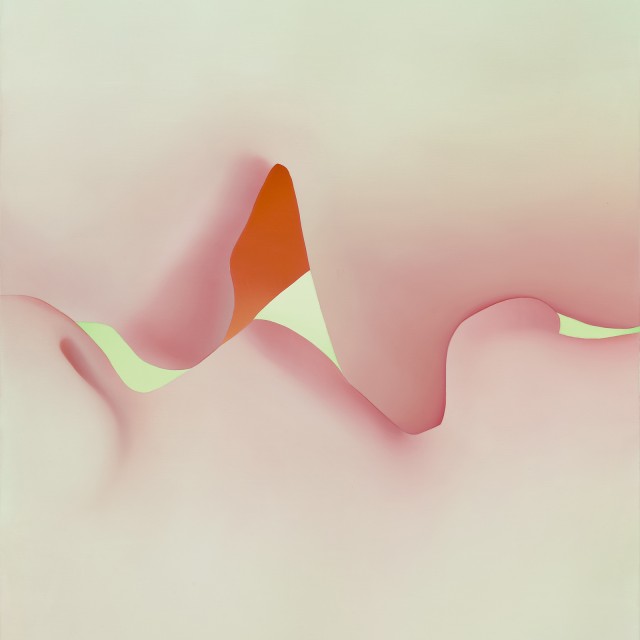March 18, 2025
LBBW Collection at the LNDM 2025
The LBBW Collection invites you to the 'Lange Nacht der Museen' on 22 March with a curated exhibition in the BW Bank Building on Kleiner Schlossplatz.


For the ‘Lange Nacht der Museen’ (LNDM) on 22 March 2025, the LBBW Collection is hosting a curated exhibition in the BW Bank building at Kleiner Schlossplatz. The exhibition by Birgit Wiesenhütter entitled ‘Grenzverschiebungen (shifting borders)’ is dedicated to works from the LBBW Collection that deal with experiences of a topographical, physical and mental border and, based on this, address the change, overcoming or dissolution of existing borders. Works from the LBBW Collection by Stephan Balkenhol, Tim Berresheim, Kerstin Brätsch, Louisa Clement, Andreas Greiner, Barbara Kruger, Mischa Leinkauf, Wilhelm Mundt and Marcel Odenbach, among others, are on display.
Guided tours and music performance
During the ‘Lange Nacht der Museen’, guided tours of the exhibition are offered every 10 minutes between 6.10 pm and 1.00 am in the BW Bank building. On this evening, interested visitors will also have access to the 6th and 7th floors of the building and gain an extended insight into the LBBW Collection.
Filderbahnfreundemöhringen (FFM) and Jam Projekt Fire Machine will present a music performance at Kleiner Schlossplatz in front of the building. The social sound sculpture by the artist collective as part of the ‘Lange Nacht der Museen’ will take place at 7.00 pm and 9.00 pm.
The subtitle of the exhibition ‘Niemand ist mehr dort, wo er hin wollte (nobody is where they wanted to be anymore)’ is borrowed from Marcel Odenbach's video work and, in the context of the exhibition, also poses the question of what consequences and effects shifting of borders entails, regardless of whether it is a question of changed national borders or the conquest of new areas of being and knowledge.
‘Niemand ist mehr dort, wo er hin wollte’ takes us back in time to the Fall of the Berlin Wall. The dissolution of this political border significantly changed the reality of life in German-German biographies, so that it still has a lasting influence on society's self-image today. However, the example of Germany is not the only one that illustrates the extent to which border shifts can trigger protracted processes of change that affect state structures as well as personal identity and individual self-image.

Mischa Leinkauf's photographs entitled ‘Fiktion einer Nicht-Einreise’ complement Odenbach's perspective on the basis of a border crossing under water, namely the unrestricted crossing of state borders between Egypt and Israel and between Spain and Morocco, which, on the other hand, are strictly militarily secured on land. The title of the work refers to a legal construct of the German government on asylum regulation in 2018: according to this, people who have not passed through border controls are considered not to have entered the country, even though they are in fact already in the country.

The artist Kerstin Brätsch captured the restrictions imposed during the Covid-19 pandemic and the first lockdown in New York in her series ‘Para Psychics’. Her forced retreat from the outside world was followed by her focus on inner feelings and her preoccupation with spirituality, shamanism and universal knowledge. This resulted in 100 coloured pencil drawings.

Shifting boundaries are also a consequence of technological progress and thus also open up new media possibilities, as shown in different ways in the works of Louisa Clement and Tim Berresheim. For years, Clement has been interested in the human body and its artificial transformations, such as her artistic treatment of a model figure in her series of works ‘Gliedermensch’.
As a pioneer of computer-aided art, Tim Berresheim is concerned with the question of what an image can be in the media context of our time. 3D and augmented reality open up the surface of his works to create spectacular visual worlds in virtual space. His work thus represents a threshold between the analogue and digital worlds, reality and virtuality.




